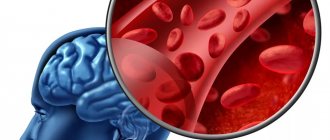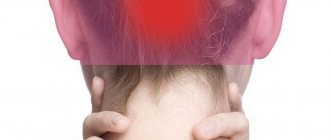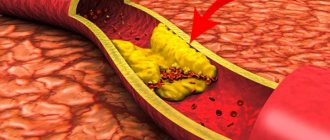- Advantages
- Doctors
- Contacts
- Licenses
Advantages
- The latest, constantly updated equipment
- Interest-free installments for all services
- Online consultations with an ENT doctor
- Visit of an ENT doctor to your home
- Friendly and qualified staff
- 24/7 ENT assistance
Olfactory hallucinations are the sensation of smells that are not there. Most often, a person feels unpleasant aromas that can cause significant discomfort in everyday life. They may be present constantly or appear periodically without connection with any factors.
Olfactory hallucinations occur for varying durations. In some cases they last for several minutes, and in others for several hours or even days. Unfortunately, neither fragrances, nor air fresheners, nor any other means help in such a situation. And this can knock a person out of the usual rhythm of life. Your doctor will tell you how to treat olfactory hallucinations after a detailed examination and an accurate diagnosis.
Hallucinations: definition and clinical manifestations
Hallucinations should be distinguished from illusions and fantasies. Such patients see objects and hear sounds that do not really exist, and they look no less vivid and believable than real ones. The difference with illusions is that existing objects appear different to the patient. Thus, at dusk or in the dark, even a healthy person can see illusory objects due to the lack of information received. With hallucinations, attacks are often repeated: the patient hears the same voice for a long time, sees the same objects that are not in reality.
Hallucinations cannot be a variant of the norm, especially if they occur with any frequency. They represent disturbances in the perception of environmental information, and their clinical manifestations depend on the localization of the pathological process. Data enters the brain through analyzer systems: visual, auditory, sensory, olfactory, gustatory, somatosensory. If the signal is disrupted in one or more of them, the following symptoms of hallucinations may occur:
- sensations of touching the skin, movement and changing the location of the insides;
- any sounds that are absent in reality - these can be voices, music, steps, claps and others;
- foreign odors that are not noticeable to others present in the room;
- the appearance of figures, light flashes, various creatures, including non-existent ones.
Negative hallucinations should also be highlighted. In this state, a person, on the contrary, does not notice really existing signals, audio or visual. This pathology is no less dangerous than positive hallucinations, since because of it the patient may not notice objects that threaten his life. The mechanism of its development is also associated with impaired conductivity from the analyzers to the central nervous system.
Physiological characteristics and development mechanism
Normally, information is perceived through five analyzer systems. They function in a complex and allow you to get a complete, three-dimensional picture of what is happening. Visual, auditory, olfactory, tactile and other types of stimuli are captured by different types of receptors and reach the brain in different ways. In the cerebral cortex (central nervous system), they are combined and analyzed, so a single, but complex picture appears in the human mind. Hallucinations are a complex of nervous disorders in which the information generated by the brain differs from reality. This can happen for several reasons:
- violation of signal capture at the level of sensory systems;
- disorders of the central nervous system;
- various poisonings and intoxications that lead to pathological changes in nervous tissue.
The trigger for the development of hallucinations can be various diseases of the sensory organs. Thus, in the absence of information normally received through the eyes (with cataracts, retinal detachment and other pathologies that lead to partial or complete loss of vision), the brain supplements the missing fragments. The mechanism of development of this phenomenon has not yet been fully studied, but there are assumptions about the presence of a kind of blockage in the central nervous system. If normally the brain is able to distinguish real objects from imaginary ones, then with visual impairment this function may disappear. However, hallucinations that develop in the absence of organic damage to sensory organs are more common.
Possible reasons
Determining the cause of hallucinations is the first and most basic task faced by specialists at the Clinical Brain Institute. The prognosis for the patient and the tactics of his treatment depend on this, as well as the degree of danger of the disease and the possibility of complete rehabilitation. There are several groups of causes that may manifest the same clinical signs, and they can only be distinguished based on the results of more detailed diagnostics.
Psychiatric diseases
One of the main reasons why hallucinations occur, not counting various drug poisonings, is mental disorders. In this case, a violation of the perception of the environment occurs, which is why there is an inadequate assessment of the environment and response disorders. Psychoses of any etiology, schizophrenia and other mental illnesses are often accompanied by hallucinations and delusions. In some patients, these signs appear independently, but in severe forms, a lack of social adaptation, apathy, speech and memory impairment may also be observed. Specialists at the Clinical Brain Institute recommend treatment in a hospital setting using drug therapy and additional methods.
Organic changes in the brain
Hallucinations can also occur as a result of brain diseases. There are no disturbances in peripheral sensory organs (eyes, nose). When certain areas of the cerebral cortex are damaged or irritated, the patient experiences any type of hallucinations. The following pathologies can be the causes of this phenomenon:
- atherosclerosis - cholesterol deposits on the vascular walls, which reduce the diameter of blood vessels, reduce their strength and elasticity, as a result of which the supply of oxygen to the brain decreases;
- short-term increase in blood pressure - also leads to impaired circulation in some parts of the brain;
- stroke is an acute disorder of cerebral circulation, which leads to dangerous consequences;
- Dementia is an acquired, progressive disorder of cognitive function (deterioration of memory, speech), most often manifested in old age.
Hallucinations with organic brain lesions are only one of the symptoms. Depending on the extent and location of the damage, other signs may be observed: impaired motor and cognitive function, delirium, fainting and even paralysis. It is worth understanding that any disorders of the blood supply and brain function can cause dangerous complications, even a regular migraine attack.
Other diseases
Hallucinations can be either one of the main symptoms of some diseases or a nonspecific sign. Their appearance may indicate the development of pathologies of the nervous system, which include:
- delirium - mental disorders that occur with dizziness and other characteristic symptoms;
- migraines - acute attacks of headache associated with impaired cerebral circulation;
- Huntington's disease is a hereditary mental disorder that becomes especially pronounced in middle age;
- schizophrenia is a common mental disorder that can occur with more or less severe symptoms and manifest itself in attacks;
- Parkinson's disease, if it has a long progressive course;
- Alzheimer's disease - severe cases may also be accompanied by impaired brain activity.
Hallucinations can occur with varying degrees of severity. In some patients they appear as flashes of light or tinnitus, while in others they include distinct voices and lifelike figures.
Hallucinations and sleep
Many mental disorders in the initial stages manifest themselves as hallucinations only in a sleepy state. They are especially characteristic of narcolepsy, a disease characterized by various sleep disorders. Such patients periodically experience attacks of uncontrolled drowsiness, which are accompanied by decreased muscle tone and hallucinations while maintaining the ability to adequately respond to external stimuli.
Sleep-related hallucinations can be divided into two categories:
- hypnagogic - appear when trying to fall asleep and represent images of varying degrees of realism;
- hypnopompic - arise at the moment of awakening and can persist for some time, and therefore a person cannot adequately perceive the surrounding reality.
It is worth understanding that periodic occurrences of hallucinations before or after sleep are normal even for a healthy person. During this period, the perception of the environment changes, so the nervous system needs time to adapt. Most often, sleep disorders occur against the background of severe fatigue or stressful situations.
Other reasons
Hallucinations can be caused by any pathology that affects the functioning of the central nervous system. These are congenital or acquired diseases, as well as intoxications of various origins. So, this symptom can be caused by the following factors:
- use of certain types of drugs, large amounts of alcohol;
- increase in body temperature to critical levels;
- poisoning with toxic substances, including some mushrooms;
- pathologies of other organs and systems in which the process of removing toxins is disrupted and they irritate nervous tissue (liver cirrhosis, late-stage renal failure);
- severe dehydration;
- traumatic brain injuries.
Drinking large amounts of caffeine can also cause hallucinations. They will manifest themselves in a mild form (tinnitus, the appearance of spots in the field of vision) and will quickly stop, but they should not be allowed to reappear.
Symptoms by which pathology is determined
Each pathology, during the development of which a person is haunted by a smell, may have certain symptoms.
To determine the causes of the disorder, a specialist must evaluate the person's complaints, analyze the factors that preceded the appearance of an unpleasant odor, and conduct a physical examination.
It is important to determine when a foreign odor is felt, whether it is present all the time or occurs periodically, which helps to eliminate it.
The intensity of the aroma is important. In addition to the distortion of smell, a person’s taste may also change. However, in any case, the symptoms depend on the cause of the pathology.
- A strong reaction to aromas is considered a painful condition and often accompanies certain pathologies;
- I can’t taste or smell food when I have a cold - what to do?
- https://lor-explorer.com/lechenie-soplej/chto-delat-esli-pri-nasmorke-propalo-obonyanie - what to do if your sense of smell is lost.
Diseases of the ENT organs
The most common cause of symptoms of the problem is considered to be pathologies of the ENT organs.
When the mucous membranes of the nose are affected, a disturbance in the sense of smell is observed.
However, the appearance of a putrid odor does not always occur. Usually this symptom accompanies sinusitis, ozena and chronic tonsillitis.
In addition, many additional symptoms occur:
- problems with nasal breathing;
- the appearance of plugs on the tonsils;
- feeling of heaviness in the sinuses;
- the appearance of purulent secretion from the nose;
- pain when swallowing;
- a feeling of dryness of the mucous membranes and the appearance of crusts.
When acute sinusitis appears, the purulent process necessarily provokes an increase in temperature, the appearance of symptoms of poisoning and headaches.
The chronic process is accompanied by less noticeable manifestations.
With angina, damage to the kidneys, joints, and heart often occurs. These manifestations are a consequence of sensitization to streptococcal antigens.
If the problem arises as a result of viral infections, in addition to rhinitis, catarrhal manifestations are sure to occur - in particular, lacrimation and sore throat.
Digestive system diseases
An unpleasant aroma often appears due to pathologies of the digestive system.
The occurrence of this symptom is based on a violation of the digestion process of food.
With the development of ulcerative lesions of the digestive organs or hypoacid gastritis, a person experiences the smell of rotten eggs. It is not present all the time, but occurs after eating.
Classification of hallucinations
Hallucinations are a complex disorder. Their clinical signs vary from patient to patient, and in some cases remain invisible to others. For their timely detection, as well as for the convenience of diagnosis, classifications have been developed according to various criteria. First of all, true and pseudohallucinations are distinguished. The first of them are realistic and fit harmoniously into the surrounding environment. In the patient’s consciousness they do not differ from real objects. Pseudohallucinations can be distinguished by the following symptoms:
- look foreign, differ from real objects, and a person understands their difference from real sounds, objects, sensations;
- auditory hallucinations are sounds that the patient hears not with his ears, but they appear inside his head or stomach;
- changes in the patient’s behavior - due to the unreality of what is happening to him and the belief that only he can experience such hallucinations, therefore he associates them with fictitious persecutors.
Pseudohallucinations occur during internal disorders and often indicate the development of schizophrenia. Patients understand that the situation that is happening to them is far from normal, and that other people do not experience the changes that are happening to them. However, patients do not call these phenomena hallucinations - more often you can hear about alien persecution and receive other unrealistic explanations.
A separate classification identifies several types of hallucinations according to the methods of their perception:
- auditory - any sounds and voices;
- visual - appear in empty space, and are not a distorted perception of other forms and objects (as with illusions);
- olfactory - the appearance of odors that no one except the patient perceives;
- tactile (more often associated with age-related mental changes or drug use) - itching, tingling of the skin, then visual hallucinations may also appear in the form of insects and other explanations for these sensations;
- gustatory - often a symptom of poisoning delirium, in which the patient is afraid of being poisoned;
- visceral - patients claim that they have a certain object inside them.
Hallucinations can occur separately or in combination. Their diagnosis is difficult, since they largely rely on data from people with mental disorders. According to statistics, visual forms appear more often in acute psychoses, and auditory forms more often in chronic forms of schizophrenia, but in most cases the type of perception of hallucinations does not have any particular diagnostic significance. It is important to distinguish which varieties can harm the patient and others, and which can be considered safe.
- Imperative hallucinations are imperative in nature. Patients may hear instructions for action in their own heads, but are afraid to admit it. This is the most dangerous variety because it can cause aggression.
- Associative - complex hallucinations. In such patients, visual images are complemented by auditory accompaniment and vice versa.
- Reflex - characterized by the presence of a real stimulus that is perceived incorrectly. They should be distinguished from illusions: in this case, the patient can perceive both the stimulus and the hallucination.
- Extracampal - with such hallucinations, the patient claims that he sees objects that are outside his field of vision (behind or to the side). All varieties, except the first, usually do not pose a danger to the patient and his environment.
Hallucinations can occur in attacks or accompany the patient constantly. In the second case we are talking about hallucinosis syndrome. Voices or images often remain the same: you can hear about a specific voice that sounds in a person's head.
Olfactory
During olfactory hallucinations, people with schizophrenia hear non-existent odors, and they are usually unpleasant or even disgusting - the smell of rotting, decomposition or feces. From the outside it is noticeable that the person is constantly sniffing and wincing. He may refuse to eat as his appetite disappears.
Some patients experience taste hallucinations. They complain about poorly cooked food or “feel” that there is poison in it. This symptom is usually combined with delusional ideas associated with persecution and conspiracy.
Diagnostic and treatment methods
Diagnosing hallucinations is a difficult task, so it is important to collect medical history from the patient and those around him. A team of professionals works at the Clinical Brain Institute: doctors will be able to determine the cause of this symptom and prescribe an effective treatment regimen, as well as provide the necessary consultations for the patient’s relatives. Examination methods are selected individually, depending on the data obtained. If the patient has a history of various bruises, open or closed craniocerebral injuries, as well as organic pathologies of the brain, the diagnosis should continue in this direction. In general, the general scheme applies:
- psychiatric examination - consultation includes a conversation with a specialist, as well as samples and tests;
- MRI or CT scan of the brain;
- Polysomnography is a method for diagnosing sleep disorders, also performed at the Clinical Brain Institute.
Treatment is selected individually. If hallucinations are caused by drugs or alcohol, you can get rid of them only after giving up their cause. Inpatient treatment is recommended, and its goal is to cleanse the body of toxins and reduce dependence on drugs and alcohol. In cases where hallucinations occur against the background of severe fatigue, a long rest is indicated, after which they pass. In other cases, drug treatment is necessary:
- neuroleptics are the main method of relieving the manifestations of mental disorders in adults and elderly patients;
- antiparkinsonian drugs, if hallucinations are caused by this particular disease;
- antidepressants - reduce the likelihood of complications;
- means to improve nutrition and blood supply to the brain.
Antipsychotics are a broad group of medications used for various types of mental disorders. Previously, their use was accompanied by a large number of side effects, but new generation drugs are safer for patients. They are mainly prescribed to older people, as well as for Alzheimer's disease. It should be understood that therapy should be carried out under the supervision of a doctor and the patient’s relatives. At the initial stage, improvements often occur, which are accompanied by a feeling of euphoria. This may lead to a desire to cancel any treatment, which is strictly not recommended. With the proper use of medications, significant results can be achieved, some manifestations of schizophrenia and psychosis can be stopped, and the patient’s mental state can be stabilized for a long time. In acute forms and significant impairment of perception, treatment is aimed at eliminating signs of aggression - even if it is impossible to completely restore the functioning of the nervous system, it is important to reduce the risks of unwanted behavior, protecting the patient and others.
The Clinical Brain Institute offers diagnostic and treatment services for patients with hallucinations. There are all conditions for a comprehensive examination, and you can also get advice from a psychiatrist. Depending on the data obtained, treatment can take place at home or in a hospital, and its success depends on many factors: the cause of hallucinations, the age of the patient and his lifestyle, as well as the reversibility of the pathological process.
Clinical Brain Institute Rating: 4/5 — 11 votes
Share article on social networks
Diagnostic procedures
Modern medicine presents a whole range of diagnostic measures aimed at identifying a specific disease. Here is just a small list of techniques that allow you to recognize an illness whose symptom is an unpleasant odor:
- electroencephalography – allows you to establish or exclude epilepsy;
- computed tomography – detects skull fractures and brain tumors;
- magnetic resonance imaging - detects inflammation and hematomas in the brain.
And these were just the basic procedures that your doctor may prescribe. We should not forget about the usual diagnostic methods that have been used in clinics for several decades. Although it should be noted that modern medicine is gradually pushing them into the background.








